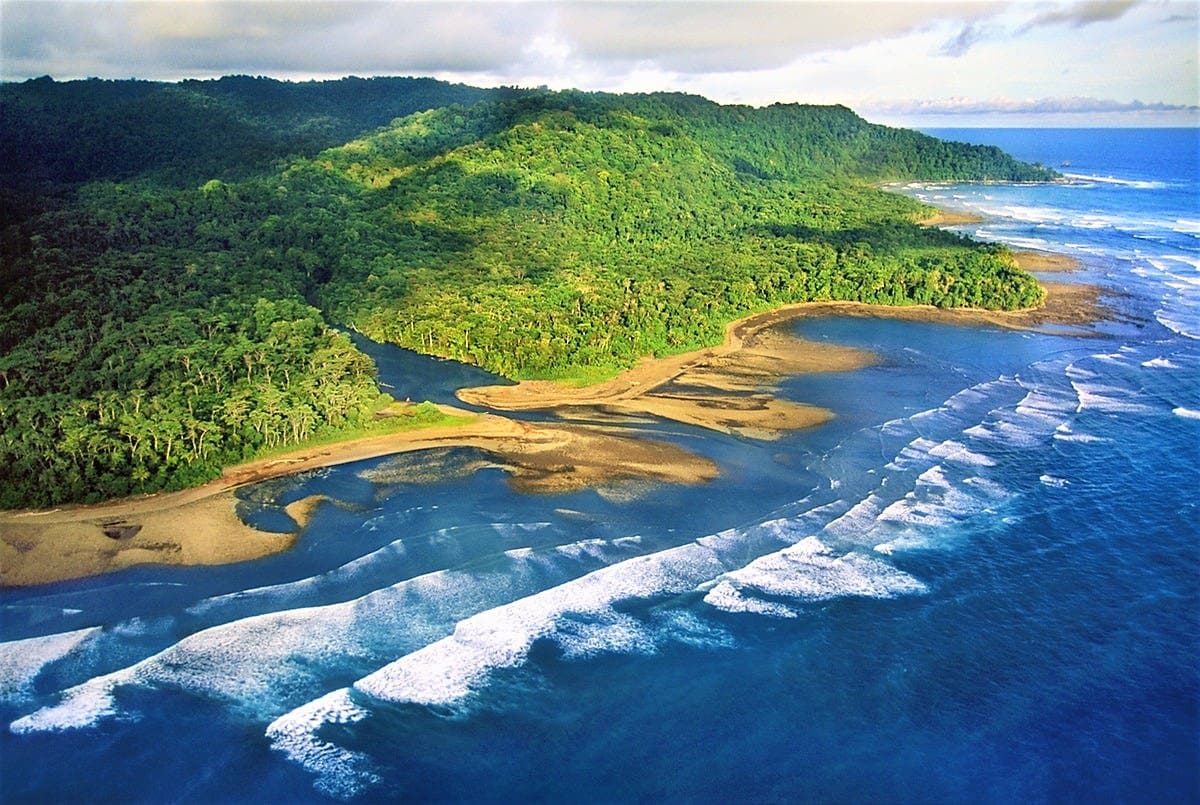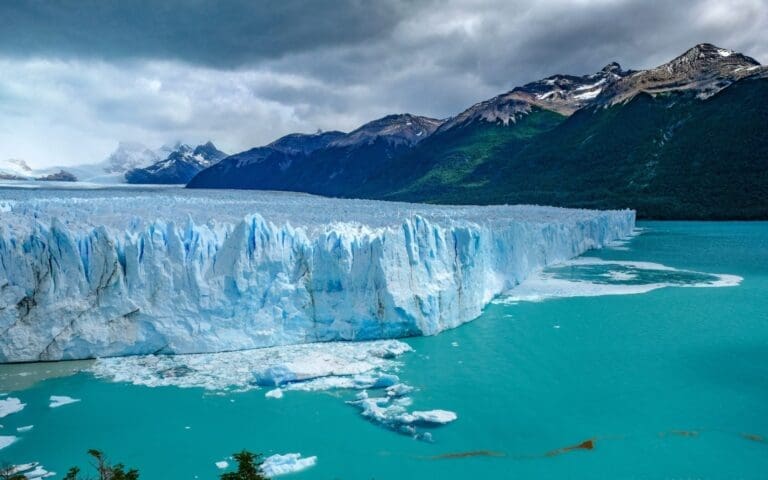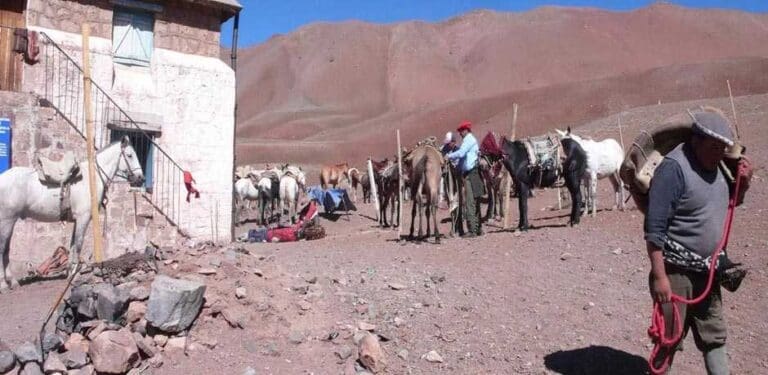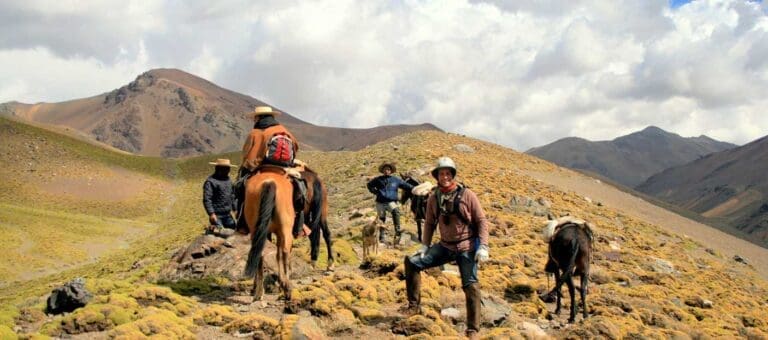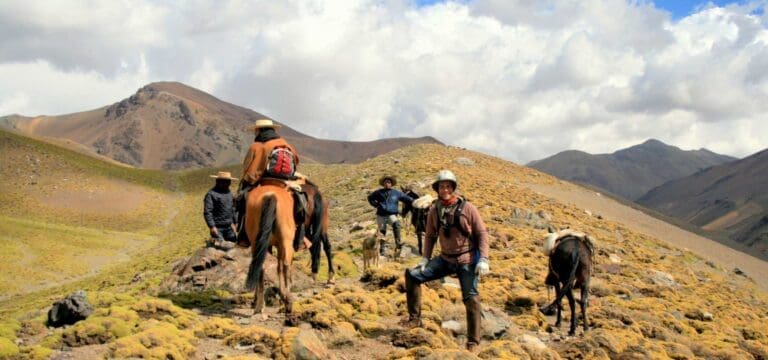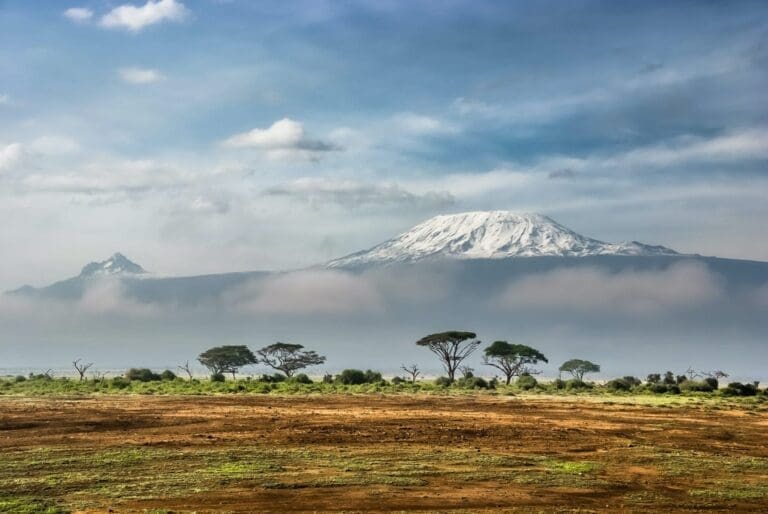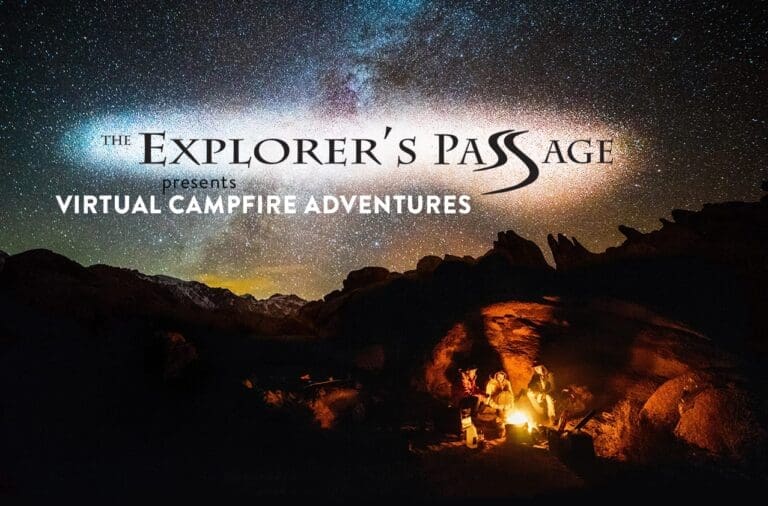Top Attractions on the Osa Peninsula in Costa Rica
Welcome to your handy guide on visiting the Osa Peninsula – named “the most biologically intense place on earth” by National Geographic. It’s one of the most untouched corners of nature left in Costa Rica and that’s really saying something since nearly 30% of this nation is designated as national parks by the government.
Curling into the Pacific like a turtle fin, the Osa Peninsula in Costa Rica begins just north of the Panama border, unfolding in 700 square miles (1,813 square kilometers) of pristine rainforest and black-sand beaches. This corner of South America is definitely worth a visit with plenty of fun things to do and see here.
The great Corcovado National Park, also known as Parque Nacional Corcovado, is a top attraction and the centerpiece of the region, offering potential sightings of exciting wildlife such as endangered jaguars and tapirs. Hiking through the park from Sirena to Los Patos is a must-do for travelers wishing to become immersed in Corcovado. But the coast around Drake Bay and the cruisy surf breaks of Cabo Matapalo are also on offer, providing ample opportunity for snorkeling and glimpses of splashing marine life.
Intrigued? Take a look at this customizable Costa Rica trip to learn more.
This ultimate guide to travel to the Osa Peninsula will outline all you need to know to start planning a trip to this amazing corner of Costa Rica, including all of Osa’s top attractions. Included are details on how to get there (which can be tricky), why you should visit the Osa Peninsula, and the best things to do once you arrive (clue: it’s bucket-list-busting stuff). Let’s begin!


What’s in this guide?
- Our experience traveling Osa Peninsula & is it worth the visit?
- Where is the Osa Peninsula?
- Getting there
- Getting around on the Osa Peninsula
- The best time to visit
- The top things to do on the Osa Peninsula
- Where to stay on the Osa Peninsula?
Our experience traveling Osa Peninsula & is it worth the visit?
If you’re wondering what’s so special about the Osa Peninsula, we’ve got the answer for you. Between snorkeling in the Golfo Dulce, dolphin and whale watching in Drake Bay, and hiking through the rainforests of Corcovado National Park, the Osa Peninsula contains some of the top attractions Costa Rica has to offer.
I’ve never been lucky enough to spot a jaguar or a tapir – the two rarest beasts of the Osa Peninsula – during my trips to Costa Rica. But I’ll say this, the very possibility of an encounter with either of those endangered creatures will keep you on your toes as you hike between the massive mahogany and ancient ceiba trees of the Corcovado National Park. A crunch of leaves here, a rustle of the liana vines there – our eyes were darting all over to see what strange and otherworldly animals were spying on us from the boughs.
The same was true on the craggy coast of Drake Bay, where, for perhaps the first time in a major whale-watching destination, we felt we were truly outnumbered by the humpbacks and the bottlenoses. A snorkeling excursion on Caño Island, just off the coast of Drake Bay will open your eyes to a whole new world below the water’s surface.
That’s the overarching vibe of the whole Osa Peninsula: It’s not you watching nature here; it’s nature watching you! It’s a trip you must experience for yourself.
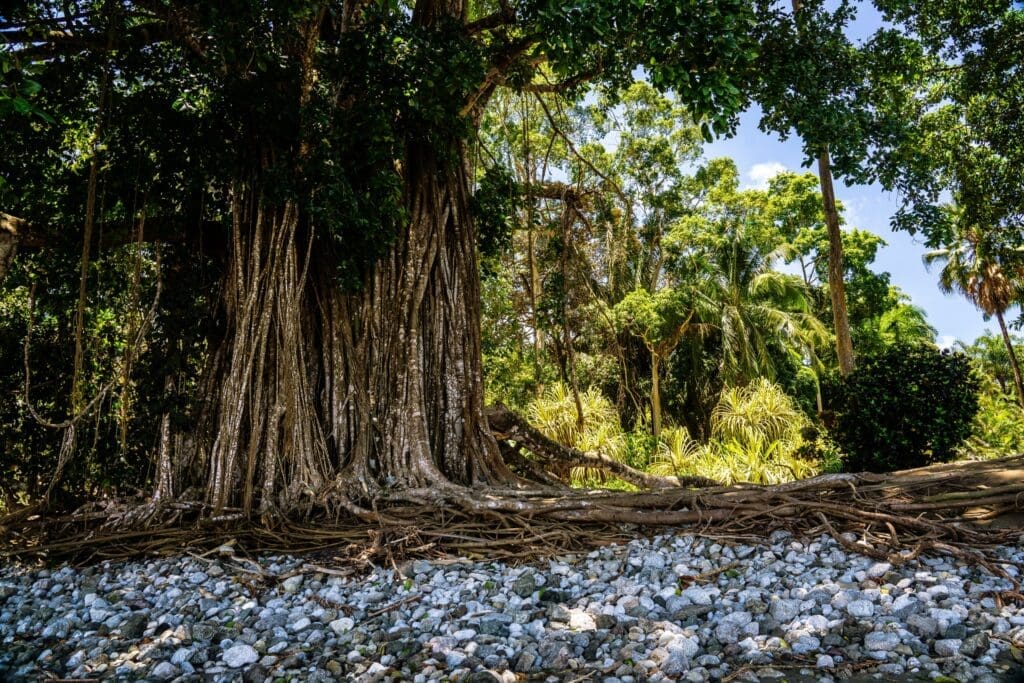

Ever since I was young, I’ve dreamed of exploring this incredible planet. I’ve been very fortunate to have explored over 50 countries across this extraordinary world and made travel my career by founding The Explorer’s Passage. We’re a premier adventure travel company and, in my opinion, the best tour operator in Costa Rica. In fact, our team has over 30 years of experience running successful tours in Costa Rica.
Not only do we run unforgettable trips to the Osa Peninsula, but we also offer tours to other thrilling Costa Rica destinations. For example, exploring the Arenal volcano or hiking through Manuel Antonio are perfect for adventurous travelers.
If at any point throughout this guide you find yourself with any questions, reach out to our team and we’ll gladly help build your dream trip!
Where is the Osa Peninsula?
The Osa Peninsula juts out of the far southwestern Pacific edge of Costa Rica as a whole. It’s a part of the long, narrow Puntarenas Province, which runs all the way up to the more visited surf towns of the Nicoya Peninsula further north.
This Central American destination is separated from mainland Costa Rica by the Golfo Dulce, also known as “the Sweet Gulf,” which provides a popular spot for humpback whales to birth their young. The Golfo Dulce is also a top attraction for sport fishers and snorkelers, due to its intense biodiversity.
Puerto Jiménez is the closest thing that the Osa Peninsula has to a capital. Puerto Jiménez sits on the eastern, Golfo Dulce side of the headland at the very end of the sole regional highway. Sitting between Corcovado National Park and the Golfo Dulce, Puerto Jiménez hosts some of the Osa Peninsula’s top activities and attractions including snorkeling, rare animal encounters, yoga retreats, and hiking trails.
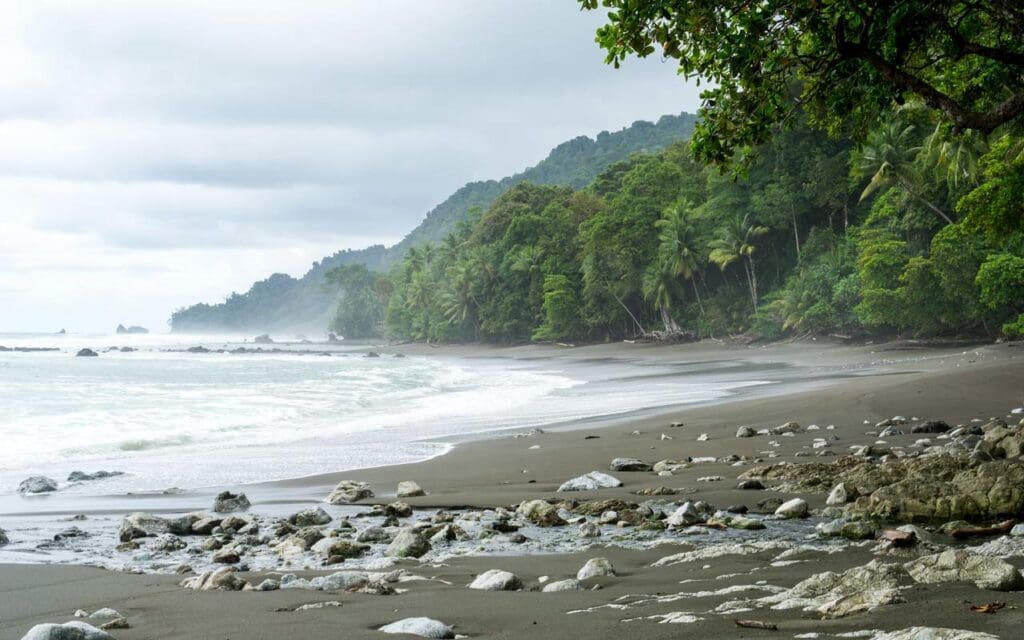

Getting there
Here’s the tricky part. The Osa Peninsula is among the most hard-to-reach destinations in the country, but therein lies the charm. A bit of legwork to get here means you won’t encounter the same big crowds as in, say, Monteverde or La Fortuna. So, how’s it done?
We’ll assume you’re flying in from San José, which is where most international travelers touchdown on Costa Rican soil. From there, you’ll have two travel options: road or air.
The first involves a long but rather incredible overland romp of 5-7 hours. The quality of the route has improved considerably in recent years, so your trip down to Osa should no longer embark on potholed detours along unpaved jungle tracks. The vast majority of the journey is actually on the well-maintained National Primary Route 34 (commonly referred to as South Coastal Drive) via the surf and relaxation haven of the small town Uvita, then onto the winding National Secondary Route 245 to Puerto Jiménez.
No surprise, the quicker way is to fly. Short-haul connections depart out of San José for the small airstrip in Puerto Jiménez several times per week. They are run solely by the regional airline SANSA Air (Servicios Aéreos Nacionales S.A.), take around 45 minutes in all, and offer sweeping panoramas of the wild Pacific rainforests from above. Other flights with SANSA go to Drake Bay, a remote town on the north shore of the Peninsula that’s great for snorkeling, as well as whale and dolphin watching.
Getting around on the Osa Peninsula
Driving around Osa by car has gotten a lot easier since the completion of an all-new highway – Route 245 – in the late 2010s. That replaced a road that was pockmarked with cenote-sized potholes with a level run of asphalt, shortening the journey to the regional capital in Puerto Jiménez to just a few hours in the process.
But you’ll probably want to venture off that major route a few times. When you do that, prepare for a return to the bumpy tracks of the old Osa. There aren’t all that many ways to go, but it is possible to drive through to Playa Carate for eco lodges on the edge of the Corcovado National Park. We highly recommend utilizing private transportation through trusted tour providers such as The Explorer’s Passage who are familiar with local conditions to ensure a smooth journey.
Local taxi drivers offer to run the route between the main towns of Puerto Jiménez and Drake Bay, but the trip can take up to 2.5 hours. There are also boat taxis from Sierpe to Drake Bay, but you may get wet! Finally, getting into the truly wild heart of the region and its reserves can only be done by hiking, but more on that later.
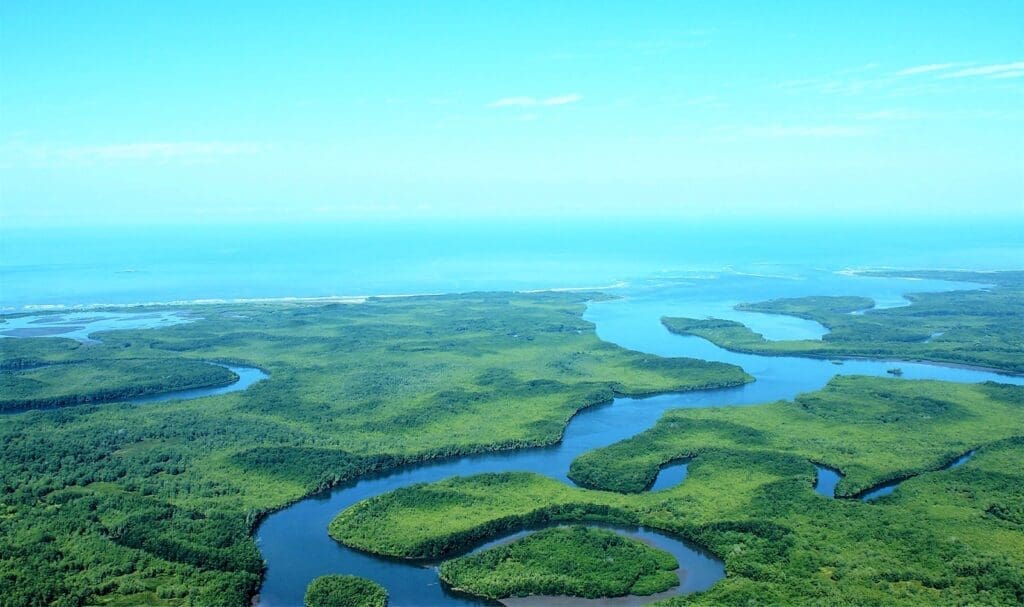

The best time to visit
While there are pros and cons to visiting the Osa Peninsula during both the dry season and the wet, rainy season across much of the rest of Costa Rica, there’s no doubt that the Osa Peninsula hits its zenith during the peak months between January and April. There’s WAY less rainfall across the coastal forests during this time, which opens up the tracks to Carate and Drake Bay but also the hiking paths of the Corcovado National Park.
The good news is that the Osa Peninsula gets just a fraction of the same visitor numbers as other parts of the country, so you shouldn’t find things getting as busy as more heavily trafficked places like Tamarindo.
The top things to do on the Osa Peninsula
Visiting the Osa Peninsula is all about feeling the beating pulse of Costa Rica’s booming biodiversity with wildlife encounters ranging from jaguar sightings to dolphin watching. Osa also provides ample opportunity for adventure through snorkeling excursions, yoga classes, hikes from Los Patos to Sirena, and more!
To get the best out of your visit to the Osa Peninsula for the adventurous souls, you’ll want to pull on the backpack and conquer 14-hour treks or brave unpredictable roads to encounter whales in hidden bays.
Just a glance at the top attractions below and you should see why this corner of the country is a favorite destination for travelers of all ages. Here are some of our recommendations for the best things to do on the Osa Peninsula:
- The Corcovado National Park (Parque Nacional Corcovado) – There’s no doubt that Corcovado National Park is attraction numero uno in the Osa. Some say that the Corcovado National Park is the most biodiverse place on the planet. It’s been estimated that over 50% of all the animals that live in Costa Rica can be found within, along with many of the country’s most endangered species, including the tapir and the jaguar.
It’s not the bite-sized bout of rainforest you get in Monteverde, mind you. Corcovado is a vast cut-out of over 164 square miles (425 square kilometers) of virgin woodland, and visitor permits are strictly controlled to a mere 50 persons per day to help protect Corcovado’s natural beauty.
The best base is the ranger station at Sirena. Short-haul prop flights go from Puerto Jiménez to Sirena each day, offering access to a part of the Corcovado National Park where you’ll see everything from spider monkeys and sloths to slithering snakes. Sirena is definitely a must-do for hiking enthusiasts.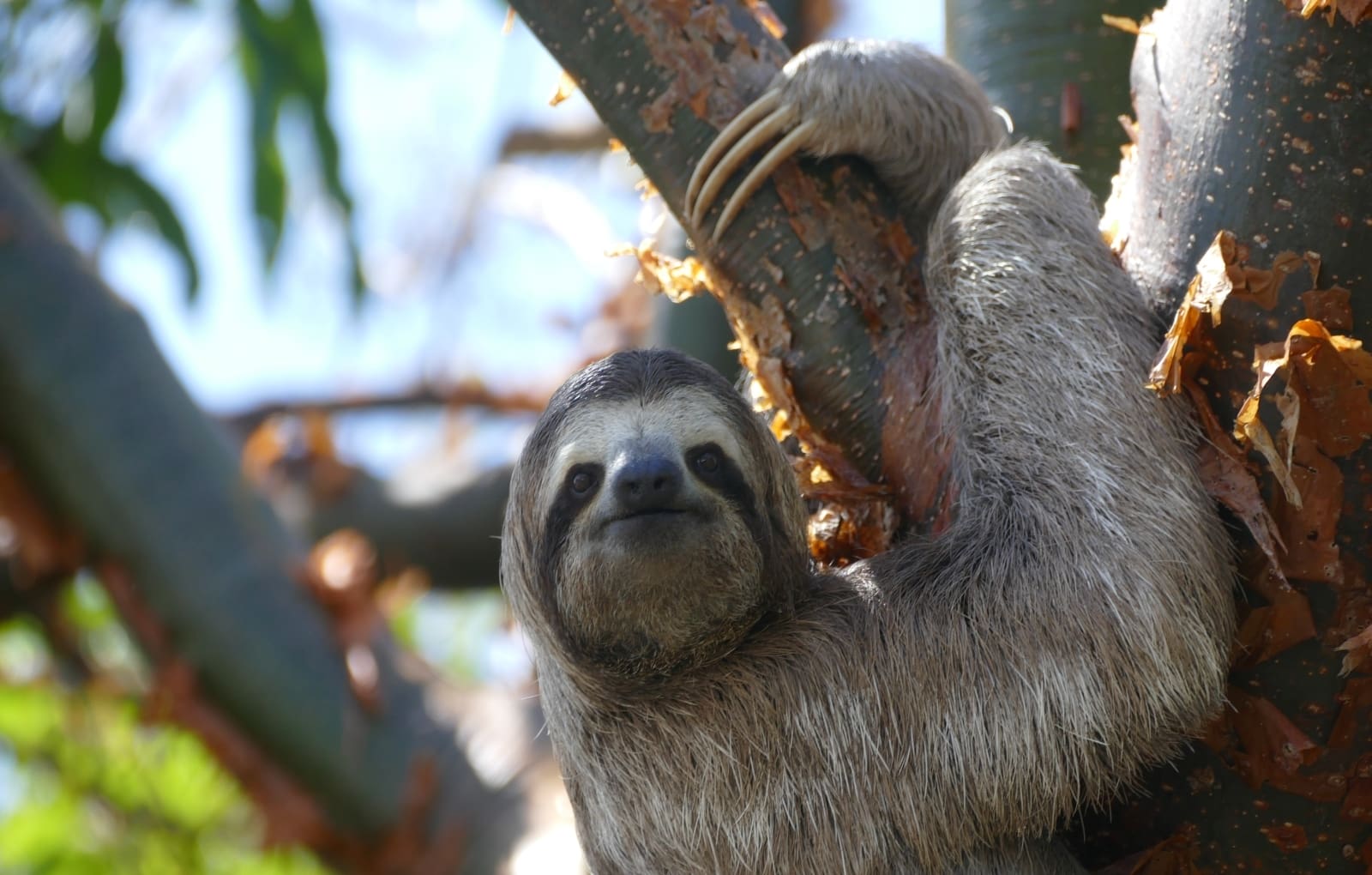

- Go hiking – There aren’t all that many trails that manage to wiggle their way into the overgrown depths of the Corcovado rainforests, but the ones that do might just change your life.
There are three marked sections of hiking, all of which converge at the ranger station in Sirena. The most popular trail of all is probably the connection to Sirena from La Leona (the southern gateway to Corcovado National Park). It’s an 11.8-mile (19-kilometer) romp that hops from white-sand beaches in La Leona to old-growth forests filled with sloths and snakes in Sirena.
Another hiking route connects from Los Patos deep inside the reserve to Sirena further west, cutting through the heart of the woods. This Los Patos trail has the best chances of encounters with monkeys, jaguars, and tapirs. Most hikes are accessible via a short flight or boat ride from Puerto Jiminéz.

- Drake Bay – Who could deny the allure of a town that’s said to be the site of buried pirate treasure from the 1600s? Well, Drake Bay can offer even more than Spanish gold doubloons.
First off, Drake Bay is famed as the finest whale watching location in Central America. From July through to November, the waters surrounding Drake Bay fill with migrating humpback whales. But it’s also not uncommon to see spotted dolphins and white-tipped sharks on your ocean safaris through Drake Bay.
Second, you can snorkel in wild reefs over on Caño Island (also called Isla del Caño in Spanish), just off the mainland through Drake Bay. Additionally, there are almost empty surf breaks up for grabs on some of the beaches surrounding Drake Bay.
- Caño Island (Isla del Caño) – Caño Island is now the centerpiece of its very own biological reserve featuring top attractions like dolphin watching, snorkeling, and ample hiking trails. Located 14 miles (22.5 kilometers) off the port at Drake Bay, Caño Island is doable on a day trip off of Osa. And what a day trip it promises to be!
You’ll dive off the side of the boat, snorkeling into rocky reefs that teem with rays, mantas, moray eels, and colossal tuna fish. Sightings of dolphins and whales are super common out at sea. On dry land, you can hike a series of trails through first-growth forests amid groves of giant guava trees and palms.
- Cabo Matapalo – Cabo Matapalo caps off the extreme southern edge of the Osa Peninsula, just an hour south of Puerto Jiménez. It’s the spot where the rich waters of the Pacific collide with the clear Golfo Dulce. In Cabo Matapalo, that happens in dramatic style, as jungled rocks lurch straight from the sea and strips of gleaming white sand run below.
There are a series of uber-mellow surf breaks here at Cabo Matapalo that have become popular with longboarders, but also more heavy tubes on the outside reefs. Some of the country’s best luxury eco hotels now make their home on the cliffs around Cabo Matapalo, too.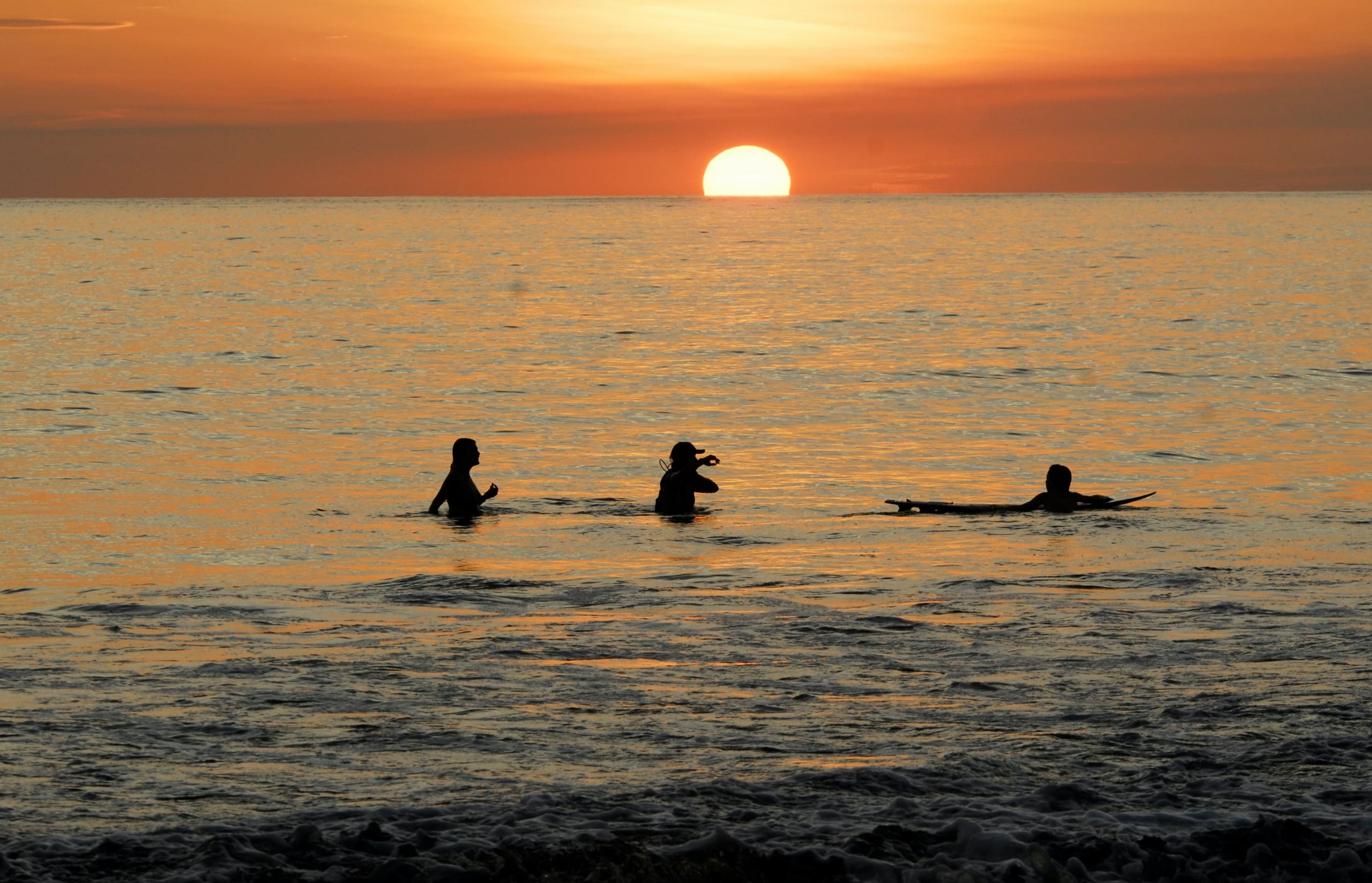

Where to stay on the Osa Peninsula?
Whether you stay in Puerto Jiménez near the Golfo Dulce or at Drake Bay on the other end of the Peninsula, it’s a bit of a hub for eco lodges and remote stays. That means you’ll probably need to do some work to get to the places we recommend below for your trip to the Osa Peninsula, but it’s 100% worth it because the reward is real immersion in the wilds of the Pacific rainforests. Most of the following hotels can be reached by boat from either Sierpe or Puerto Jiménez.
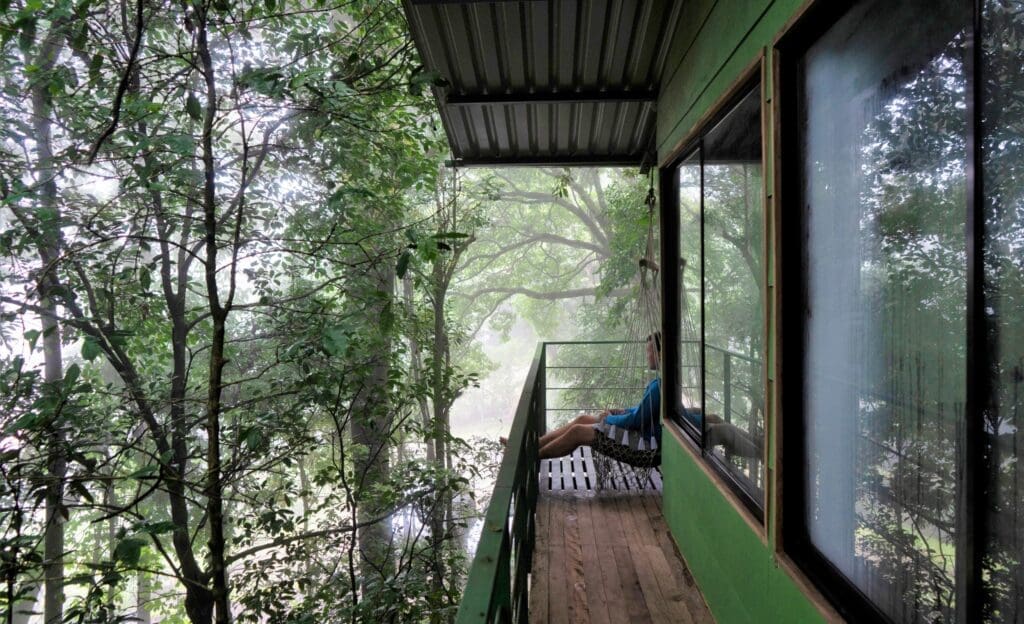

- Lapa Rios Lodge – The Lapa Rios Lodge sits in the heart of the rainforest just south of Puerto Jiménez on the very tip of the Osa Peninsula along the Golfo Dulce. It’s part luxury stay, part eco lodge, charged with protecting a 1,000-acre (405-hectare) dash of tropical lowland rainforest.
The Lapa Rios villa units are spacious and sleek, with thatched roofs and decks that overlook the canopy and the coast, a perfect view for some morning yoga. We especially love the Lapa Rios Lodge’s outdoor bathrooms – think showering to the call of the howler monkeys each morning!
- Botánika Osa Peninsula, Curio Collection by Hilton – The Botanika Osa Peninsula hotel prides itself on providing immersion into the lush rainforest setting. This hotel boasts a premium location in Puerto Jiménez along the Golfo Dulce, just a short trip to Corcovado National Park. When you’re not out adventuring or trying out some yoga, enjoy relaxing in the lagoon-style pool, indulging in fine cuisine, and unwinding at the spa.
- Aguila de Osa – Aguila de Osa is a rainforest lodge nestled in the heart of Drake Bay. This lodge offers convenient access to top attractions including Corcovado National Park, Caño Island, and a host of thrilling activities such as snorkeling and sport fishing. You’ll wake up each morning with gorgeous views of Drake Bay and the surrounding tropical hills.
- Copa De Arbol Beach & Rainforest Resort – Only accessible by boat, this hotel is perfectly situated between Drake Bay and Corcovado National park. Offering the unique opportunity to be truly remote, you’ll become truly immersed in the wildlife, possibly spotting a jaguar or monkey as you hike through the rainforest surrounding the hotel.
- Playa Cativo – The lodge at Playa Cativo isn’t actually on the Osa Peninsula itself. Instead, it clutches the edge of the mainland across the Golfo Dulce. You’ll still have old-growth rainforest on the doorstep, in the form of the Piedras Blancas National Park, but it’s all a little easier to access and has luxuries like honeymoon suites and a shared pool.
- SCP Corcovado Wilderness Lodge – The SCP Corcovado Wilderness Lodge is set in 170 acres (69 hectares) of private nature reserve on the northern side of the Osa Peninsula just along the edge of Corcovado National Park. It’s some four or five bays around from the whale- and dolphin-watching mecca of Drake Bay.
The lodge has a series of spacious jungle cabanas with covered terraces and indoor-outdoor bathrooms. The pristine beachfront of Playa San Pedrillo is just down the path one way, while waterfalls and sloth-filled jungles are the other way.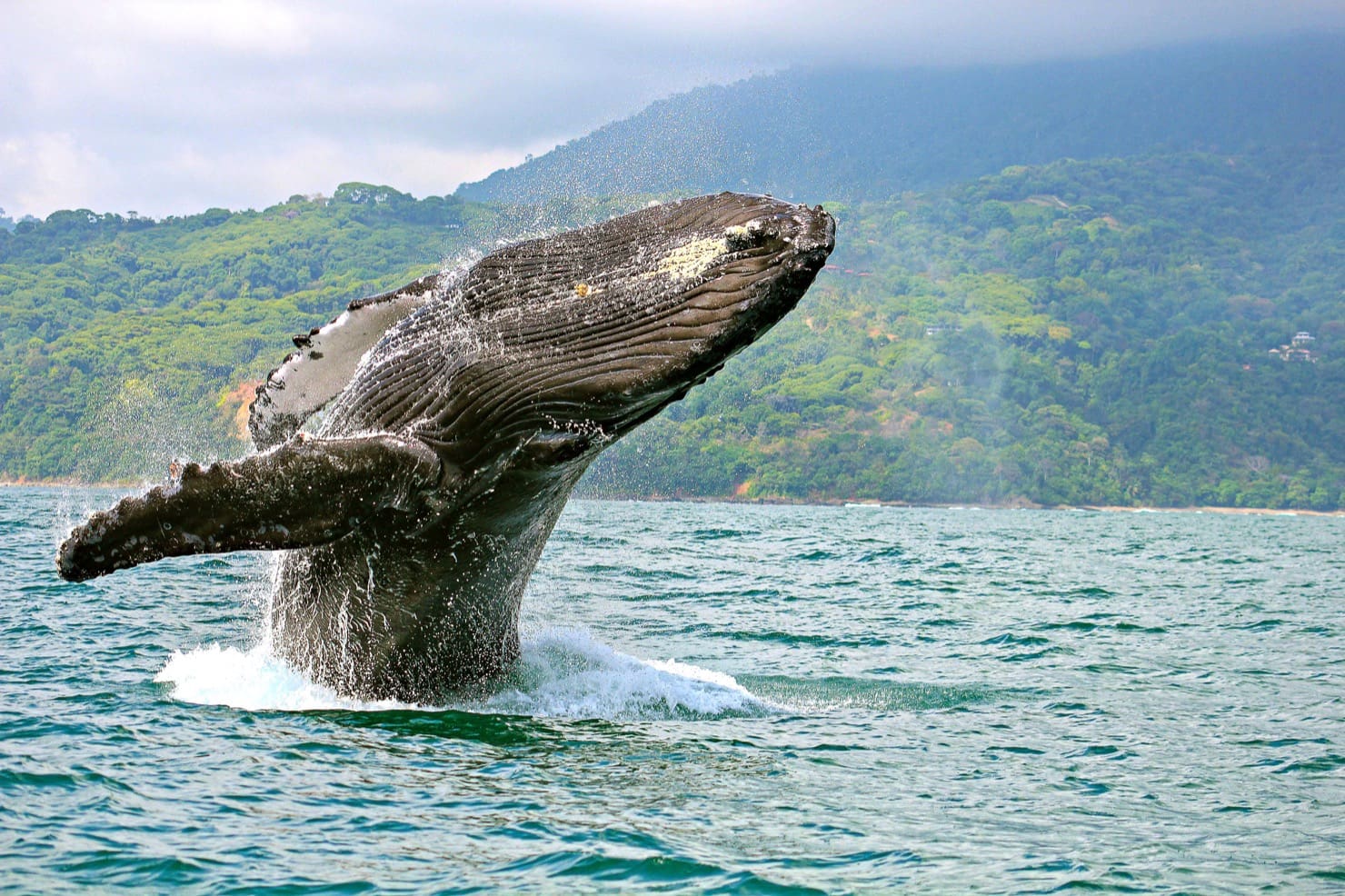

This detailed guide is just a taste of what you’ll experience on a remarkable trip to the Osa Peninsula. Looking to tailor your trip to Costa Rica? Check out the other customizable Costa Rica itineraries that The Explorer’s Passage offers.
Better yet, if you have more questions on visiting the Osa Peninsula or need help planning your trip to Costa Rica, let’s connect! Our knowledgeable Adventure Consultants would love to hear from you so contact us and let us show you what’s possible.
Why travel with The Explorer’s Passage?
We pride ourselves on delivering extraordinary tours based on travelers’ needs and are humbled by our guests’ testimonials. In fact, our dedication has earned us a 5-star rating on Tripadvisor, and awards by Travel+Leisure Magazine and Newsweek. Check us out and discover why so many travelers worldwide choose us.
My team and I would love for you to join us in Costa Rica or on any of our many other popular adventure trips.
I look forward to you traveling with us soon!
Cheers,
Jeff
Jeff Bonaldi
Founder & CEO
The Explorer’s Passage
About Jeff Bonaldi
Jeff Bonaldi is the Founder and CEO of The Explorer’s Passage, a premier adventure travel company. His mission is to provide travelers with the opportunity to transform their lives and the planet through the power of adventure.
Learn more about Jeff’s story and his company HERE.
Share this amazing location!

